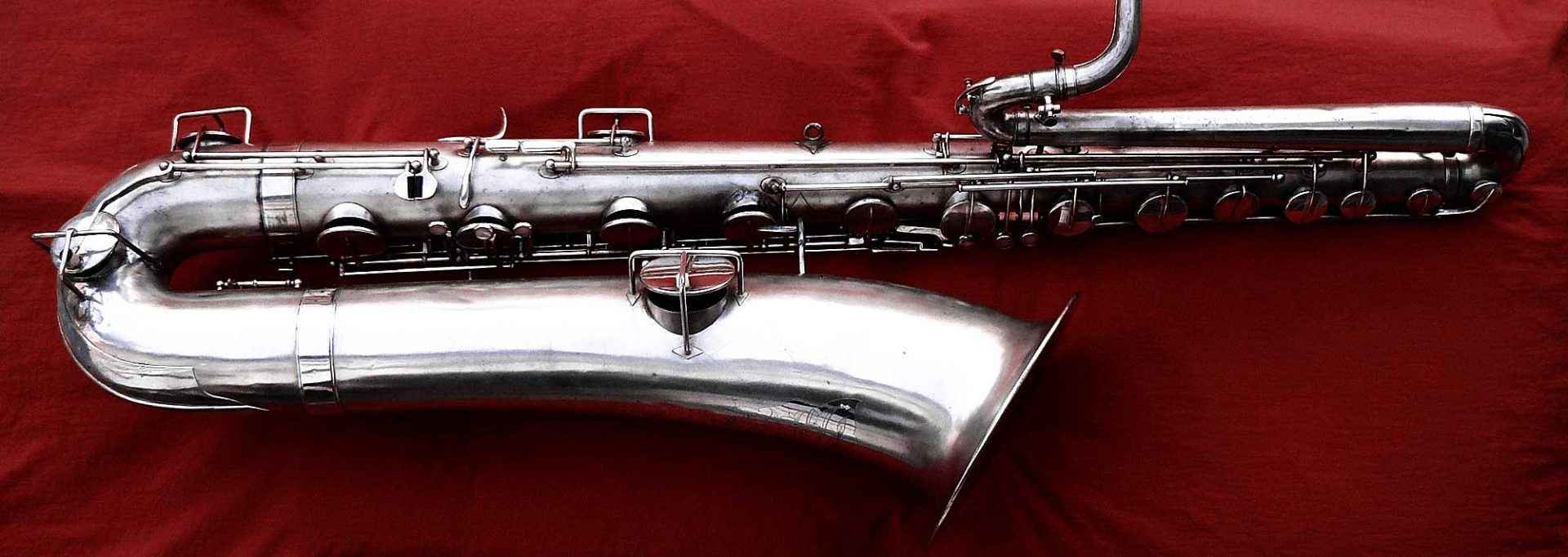Just what are all the bits and pieces of a baritone called? That’s the question that confronted the owner of a small music shop earlier this week. Although a musician, he isn’t a sax player, and knows jack about saxophones. However, he ended up with a Selmer Mark VI bari in his shop that he plans to sell.
Despite scouring the Internet for images of baris, to familiarize himself with what the various bits and pieces of a baritone saxophone are called, he came up with nothing. Apparently no one has uploaded an image of a bari with all its pieces labelled. The other day I received an email from the man, let’s call him Jack (not his real name), in which he asked me what the various bari bits are.
Because Jack is not the first person to contact me with such a request, I decided to create…
The bits and pieces of a baritone saxophone: A visual reference
This visual reference chart is for anyone selling a bari, but not necessarily familiar with the basic terms used to describe the pieces that make up the horn. Now I realize I could have gone crazy and labelled all kinds of other parts as well. So I’m tossing this out to you, the experienced players who read my website:
- Did I miss anything obvious?
- Do you think there is something not-so-obvious I should be adding?
Please leave any suggestions, re: additions or corrections, in the form of a comment at the end of this post. Thanks!
The right side of a low Bb bari
The left side of a low Bb bari
A bari’s “pigtail” region
A bari’s upper bow region
I’m thinking of doing one of these up for bass saxophone, as well as soprano and tenor. These labelled photos would allow potential eBay sellers a point of reference to draw from when putting together their ads.
Also, just because it’s a bugaboo that really gets to me, when you photograph a horn you are selling, make sure the neck has a mouthpiece on the right way around. Nothing screams: I KNOW NOTHING ABOUT SAXOPHONES, more than having the mouthpiece on upside down.







@ Paul: I was wondering about putting the stack key reference in. I thought it might clutter things up too much. Or maybe just cause confusion amongst those who are not sax savvy. Good point though. I’m redoing/tweaking the diagram anyway, so I’m going to see what to do with this.
@ Kev: Good point on the bow. I’ll deal with this in the revision.
@ Lisa: Oh, I haven’t started on this sax yet. It needs to have all it keys taken off first. Then I can start to run strands of wire, attach beads, and glue coloured glass, and most importantly, fasten Swarovski crystals. Because let’s face it, some things never go out of style, like: birthdays, saxophones, crystals, :censor: …. 😈
BTW folks, I’m just kidding. This is my main bari, it’s not being turned into an “art sax”. Lisa is a friend, and owns the shop where I am currently working on my art sax.
Hi Helen,
A few other notes about the jargon:
The right-hand keys are also called “the lower stack” and the left-hand keys “the upper stack”.
The neck is also called a “bocal” in some variants of English, and the mouthpiece a “beak” (the latter is common among francophones like your “Canuck” sisters and brothers :cheers: )
Peace,
paul
I like this a lot!
Bow – might be better to put a ring around the bow – in the first pic it looks as if you mean part of the bell is the bow.
But where are the beads??????